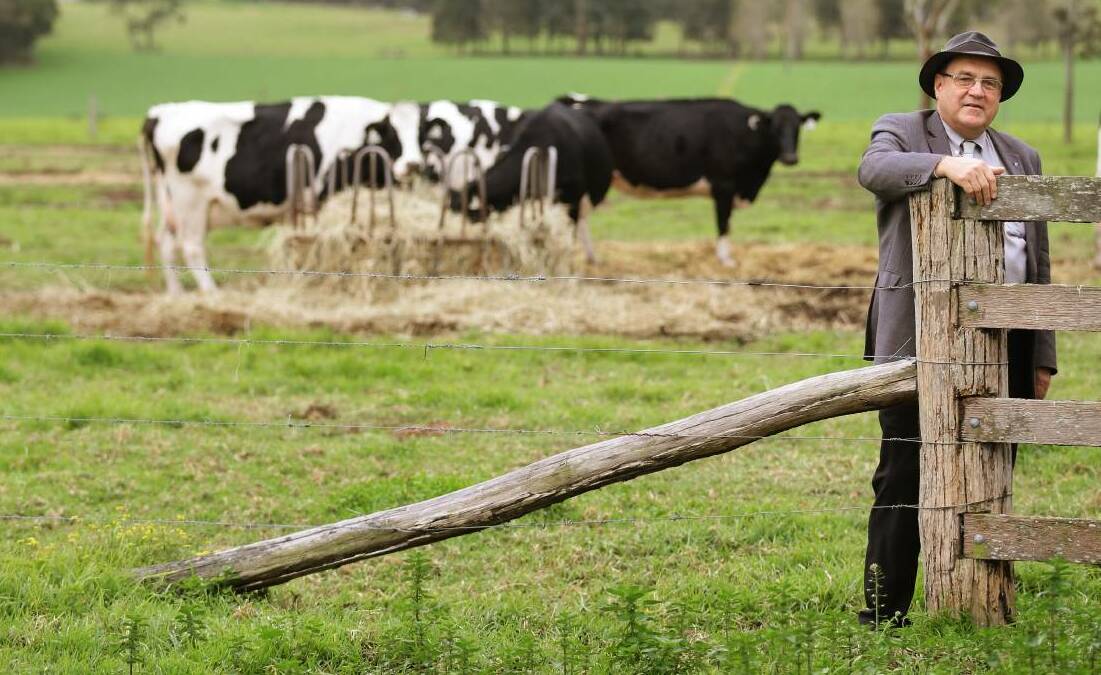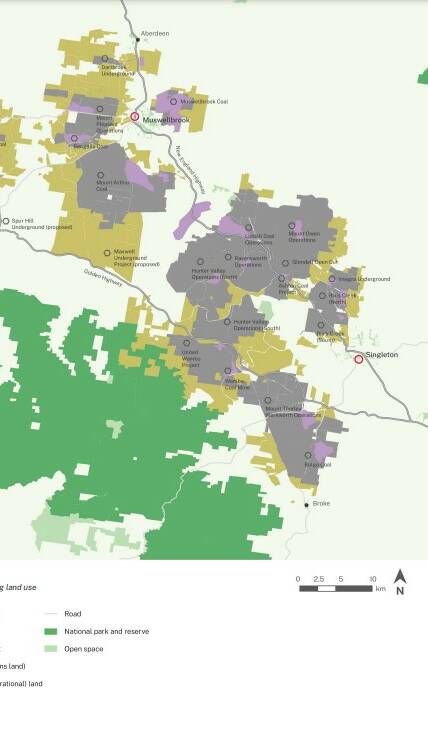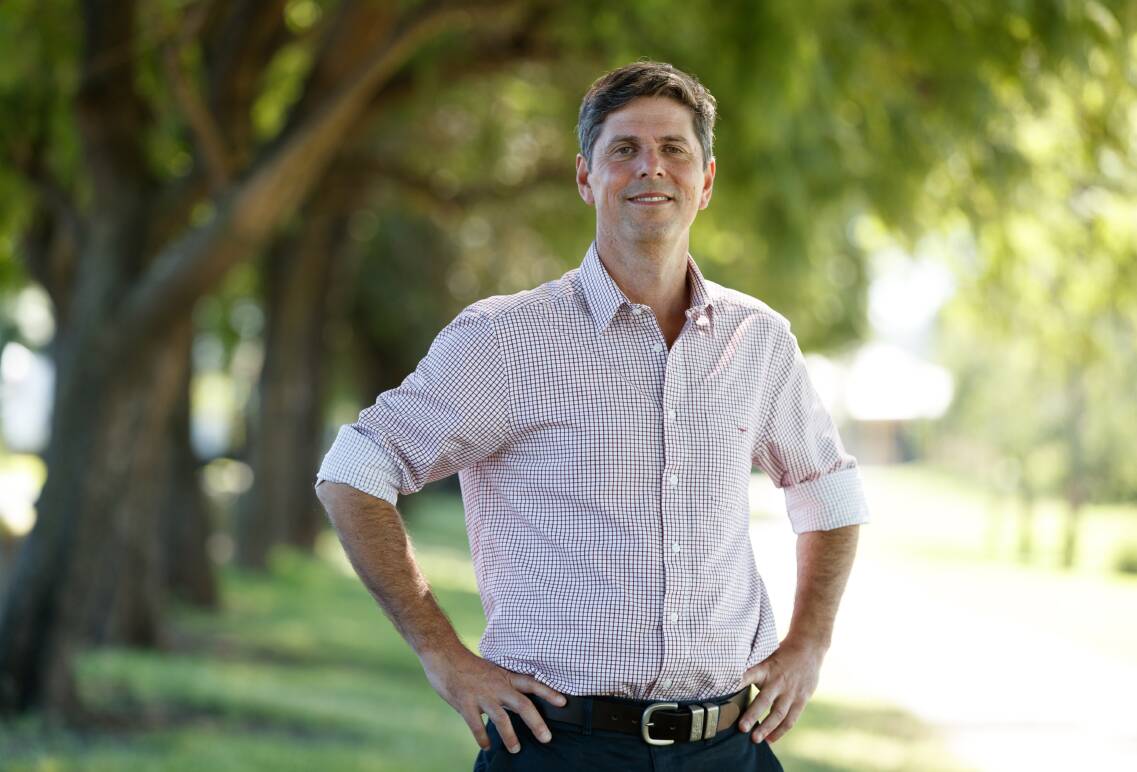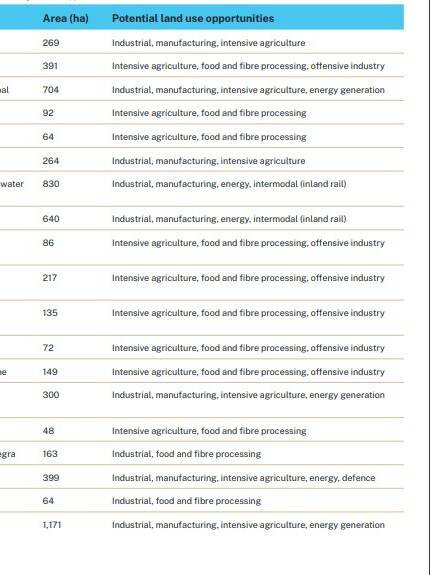
MORE than 6000 hectares of mining land in the Upper Hunter has been earmarked for other industries as part of a blueprint to diversify the region's economy and create thousands of new jobs.
Amid concerns about a long-term global shift away from coal, the state government has identified sections of mining leases that could be used for everything from intensive agriculture to manufacturing and hazardous industries to food processing.
The Newcastle Herald can reveal that the Perrottet government is looking at ways to amend planning controls to unlock large parcels of mining land around Singleton and Muswellbrook.
It's understood this would include rezoning parts of mine sites for other uses and permitting land uses that aren't currently allowed on mining land without the need for rezoning, so development applications can be lodged faster.
Under current mine approvals, many sites must be rehabilitated and returned to conservation or primary production.
The draft Hunter Regional Plan 2041, has earmarked 6058 hectares of land - an area larger than Sydney Harbour - as the first step to attracting new industries to the Upper Hunter.
Parcels of land ranging from 48 hectares to 1171 hectares at 18 Upper Hunter coal mines have been identified as suitable for other industries.
More than 800 hectares of land at Liddell and Bayswater power stations is also included in the plan.

Upper Hunter MP Dave Layzell said unless mining land was unlocked soon for new job-creating industries, residents would be forced to watch "our area die".
Mr Layzell said there was genuine interest from large firms looking to relocate or set up in the Upper Hunter, but there was no suitable land available due to the mines.
He said changes needed to be made to allow mine land to be redeveloped to generate jobs and take advantage of existing infrastructure, such as rail loops and transmission lines, that could be repurposed to grow new industries.
"The mines own all the land and they own buffer lands. The big challenge we've got is under the mining leases they have to complete their rehabilitation before the land can be used for anything else," he said.
"We can't afford to wait this long, we need to get new industry started in the Upper Hunter."
The Newcastle Herald reported last month that 64 per cent, or 1280 square kilometres, of the Hunter Valley floor between Broke and Muswellbrook is taken up by mining leases, according to research from the University of Newcastle.
A Department of Planning and Environment spokeswoman confirmed that the government was investigating ways to diversify mine land for new uses.
The draft Hunter Regional Plan 2041 was issued in December and is expected to be finalised later this year.

"The majority of community feedback during the exhibition period supported the initiative to look at opportunities to repurpose rehabilitated mines and decommissioned power stations into renewable energy hubs and manufacturing facilities," she said.
"The draft plan does not require companies to change their operations or current plans for closure but supports them to consider alternative uses.
"We will investigate how we can support them to do so, once the draft plan has been finalised later this year."
Part of the plan involves growing the Upper Hunter's agriculture industry, including intensive animal farming like chickens and pigs.
Retired Tocal College head Cameron Archer, who has been involved in looking at opportunities for the Upper Hunter, said it was crucial to bring land "back into the mainstream economy".
Mr Archer said the "patchiness" of the regulatory framework that oversees mine land, due to different requirements throughout time as mines were approved, meant there had been no coordinated investigation into what was actually possible.
He said the Upper Hunter was perfectly placed to grow a thriving agriculture industry due to its proximity to markets and feed growing locations, plus reliable water supply.
"We can't afford to do this bit by bit as mines close because we will lose the opportunity of whole quantum," Mr Archer said.
"Mining companies are there to mine and when they no longer want to mine, they leave. Somehow we need to transition the land into bigger parcels that can be treated as whole so the region benefits and diversifies."
Mr Archer said to date the government had been reluctant to get involved which was "unfortunate", but he believed there needed to be acquisition of large parcels of land by a special authority set up to oversee the Upper Hunter diversify.
"Farms don't stop, they keep going," he said.
"Mines stop, but good farms just keep going and those jobs keep going too."

Late last year Muswellbrook Coal issued a masterplan for its site once the mine closes in September and 150 workers lose their jobs.
The mine's owner, Japanese energy producer Idemitsu, has a view to transform the old pit into an energy training and industry precinct.
The project, which will incorporate green hydrogen, solar and pumped hydrogen, is a key part of the company's efforts to reduce its carbon emissions by four megatonnes and generate four gigawatts of renewable energy by 2030.
The company is aiming to be carbon neutral by 2050.
Idemitsu Australia chief executive Steve Kovac said the project represented a "once in a generation opportunity" to stimulate economic growth and create jobs following the mine's closure.
The most advanced component of the project, The Bells Mountain pumped hydro scheme, will see the mining void transformed into a 250 megawatt generator by 2027. The mining void can hold six gigalitres of water (by comparison Grahamstown Dam holds 182 gigalitres).
Water would be pumped 2000 metres to the top of Bells Mountain where it would be stored in a 1.9 gigalitre reservoir that would be created on the top of the mountain.
It would flow using gravity through pipes to drive a turbine at the base of the mountain.
The project would generate 250 megawatts with eight hours of storage capacity (for a total of 2000MWh of stored energy) to feed electricity into existing high voltage power lines nearby.
Work is also underway to assess the feasibility of a 150-200 megawatt solar photovoltaic array and associated battery project.
The third element is a green hydrogen production and refuelling facility, which Idemitsu is developing with advisory firm Energy Estate.







